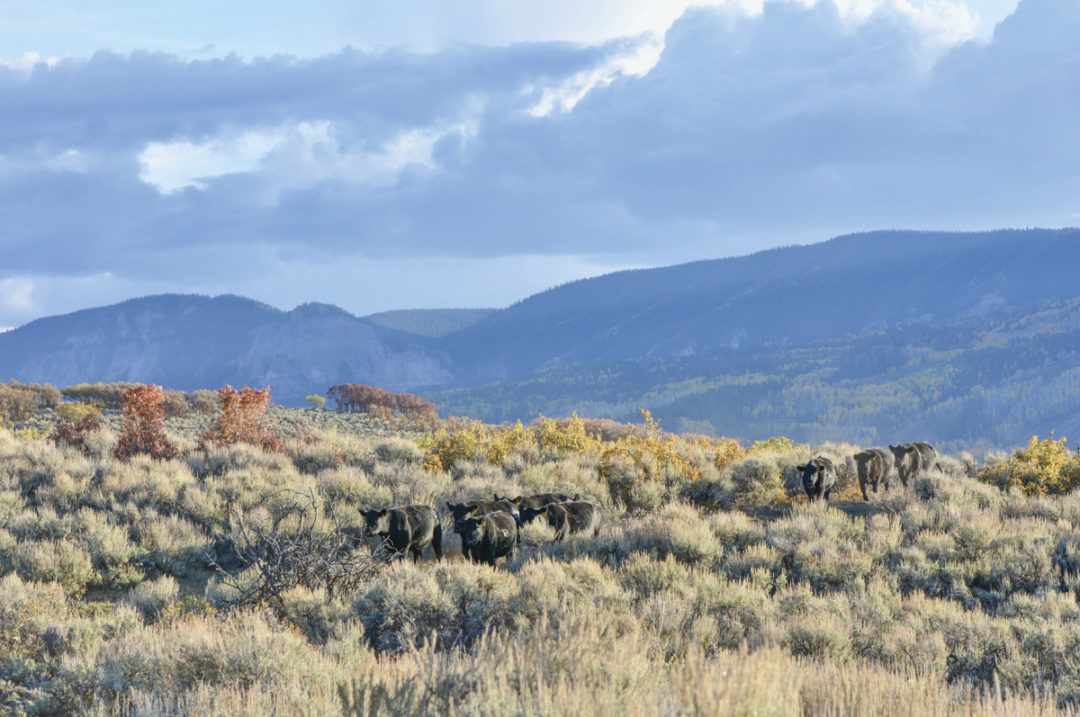Kathi Creamer remembers it like it was yesterday – the moment she knew she’d found her life’s calling. She was 9 years old, following her 4-H club as they made their rounds of the National Western Stock Show in Denver.
“I walked through those barns,” she recalls now, “and just felt this awe at the quality of cattle presented there. My dream and my goal became to one day raise Angus cattle of that quality.”
 Kathi Creamer has been driven to raise high-quality Angus cattle since her youth. Photo courtesy of Lazy JB Angus.
Kathi Creamer has been driven to raise high-quality Angus cattle since her youth. Photo courtesy of Lazy JB Angus.
Decades later, it’s safe to say that mission has been accomplished. Cattle from Lazy JB Angus – the Angus seedstock ranch started by Kathi’s parents, Frank and Elizabeth Biella, and now operated by Kathi, her husband, Jeff, and their children, Brandon and Britney – have brought home purple banners from stock shows across the country. In fact, their bull Lazy JB Ego 1428, was named grand champion Angus bull at this year’s National Western, checking off a bucket list item for the family. On top of that, Jeff and Kathi were named the American Angus Association’s 2023 Herdsman of the Year.
The funny thing about all that success in the show ring, though, is this: Winning shows is not the point of the program. When the Creamers moved their ranch in 1998 from the small town of Louisville, Colorado, (which was being swallowed up by Denver’s urban sprawl) to a more remote location near Montrose, Colorado, they knew they had to raise cattle that could thrive in the rough high desert country. By and large, their genetic program has cleared that hurdle with flying colors. The fact is, the cattle in Lazy JB Angus' highly successful show string are the cattle successfully grazing the often sparse mountain pasture and raising quality calves. They wouldn’t have it any other way; the show ring is unequivocally secondary to the cattle’s real-world performance.
“We want our show cattle to be a reflection of cattle that can perform for anybody in the pasture, in the feedlot and in the show string,” says Kathi. “When we exhibit an animal, we believe it has all the characteristics of a complete beef animal. We start with the basics of fertility, health, soundness and an attractive phenotype. We expect our cattle to come home from a show and perform on the resources we have here at the ranch.”
 Jeff and Kathi Creamer and their children, Brandon and Britney, own and operate Lazy JB Angus in the high desert near Montrose, Colorado. Photo courtesy of Lazy JB Angus.
Jeff and Kathi Creamer and their children, Brandon and Britney, own and operate Lazy JB Angus in the high desert near Montrose, Colorado. Photo courtesy of Lazy JB Angus.
While many of their peers on the show circuit have transitioned over the past 20 years or so to marketing their cattle specifically for shows, Lazy JB Angus has maintained a firm position: Their Angus cattle are developed for the commercial cattleman and exhibiting at regional and national shows is a means of providing potential customers with a good look at those animals.
“Even though we show and have done well there, it’s not our bread and butter,” says Britney. “We can’t sacrifice that identity of working for the commercial producer.”
So what exactly does working for the commercial producer look like at Lazy JB Angus? The home ranch rests at 6,500 feet above sea level; cattle spend five to six months every year grazing range as high as 9,000 feet. The area only receives about 10 inches of precipitation annually. Lazy JB Angus cattle are bred and expected to perform in dry, rough country.
 Jeff Creamer checks cows on mountain pasture near Montrose, Colorado. Photo courtesy of Lazy JB Angus.
Jeff Creamer checks cows on mountain pasture near Montrose, Colorado. Photo courtesy of Lazy JB Angus.
“We’re not really on the road to anywhere,” Jeff says with a smile. “A lot of people will see pictures we post and think it’s this beautiful country – which it is. We love to have folks out here, but if you want to go through our cows, be prepared to not breathe very well.”
To develop cattle that thrive in such an environment, the primary focus of the Lazy JB Angus breeding program is the literal foundation of the animal: feet and udders.
“We are very critical of feet and udder structure because cattle have to be able to do their job and make a living around here,” says Britney. “Whatever your environment is, it’s important to start with those feet and legs. For dams, we’re going to look very closely at those udders as well.”
Like much of the country, western Colorado has been heavily impacted by drought the past few years. While a dry environment is nothing new to the Creamers and their cattle, having even less water than normal certainly has an impact. The current drought has been a bit of a blessing in disguise, as it has provided a natural litmus test of Lazy JB Angus’ genetic selection. While some producers in the area have had to sell their operations because of a lack of quality pasture and low feed availability, Lazy JB Angus cattle have held their own against the elements.
 While their success in the show ring is rivaled by few, the Creamers prioritize performance in commercial production above all else. Photo courtesy of Lazy JB Angus.
While their success in the show ring is rivaled by few, the Creamers prioritize performance in commercial production above all else. Photo courtesy of Lazy JB Angus.
“We’ve been fortunate to still see progress,” says Britney. “That says to us that we’re making the right breeding decisions, both in the bulls we’re selecting and the heifers we’re retaining. It’s given us confidence that we can continue to make the necessary advancements through our breeding program.”
That constant drive to improve means the family rarely gets a chance to rest on their laurels. This year, Lazy JB Angus has retained ownership in their steer calves as part of a study led by Tim Holt at Colorado State University that will investigate the effects of PAP testing at high altitude and how that transitions to the feedyard. As seedstock producers, they understand that the decisions they make on their operation affect not only the cow-calf ranchers who buy their bulls, but trickle down to feeders and retailers. The hope is that this study will provide answers to help the industry prevent feedlot cattle suffering (and sometimes dying) from heart and lung issues before they can be harvested. The Creamers see it as both a responsibility and an opportunity to better understand how their cattle perform all the way down the supply chain.
“It’s obviously not quite this simple, but our philosophy is to focus on the basics and just stick with it,” says Kathi. “A good, solid animal will produce good, high-quality meat. If you stray from that, you run into issues.”
 Photo courtesy of Lazy JB Angus.
Photo courtesy of Lazy JB Angus.Call it simple honesty or honest simplicity – that principle has guided a little girl who wanted to raise “cattle of that quality” to a life doing exactly that.









